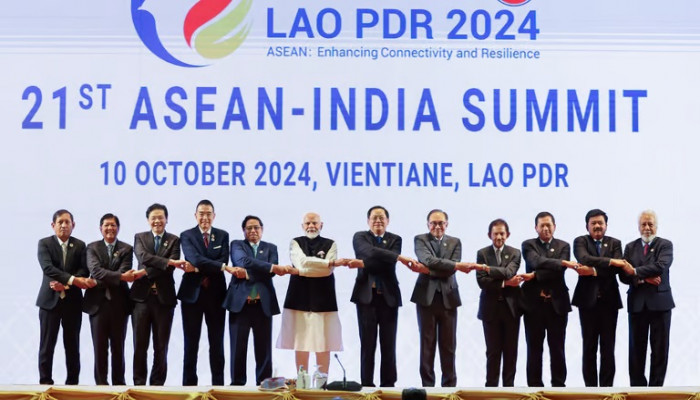Look East Policy of 1992 Meets Act East Vision

Strong 8k brings an ultra-HD IPTV experience to your living room and your pocket.
PM Modi is currently attending the 21st ASEAN-India Summit in Laos. He has mentioned that East Asia summit is an important pillar of India’s Act East policy.
What is Act East Policy?
India has been focussing on building and strengthening its relations with eastern Asian countries.
The union government stated that the "Act East Policy focuses on the extended neighbourhood in the Indo-Pacific region" in response to a question in the Lok Sabha. with ASEAN as its core. Through ongoing interaction at bilateral, regional, and international levels, the Act East Policy seeks to advance economic cooperation, cultural linkages, and the development of strategic relationships with nations in the Indo-Pacific region.”
Informing the nation about the summit, PM Modi took to social media site X and posted “Took part in the 19th East Asia Summit being held in Vientiane, Lao PDR. India attaches great importance to friendly relations with ASEAN. We're determined to provide this relationship even greater impetus in the future," local
In this post he spoke about the Act east policy and wrote “ Our Act East Policy has led to substantial gains and have contributed to a better planet. In addition, we want to work toward an open, inclusive, free, and rules-based Indo-Pacific region.
India’s intention has always been to focus on eastern asia countries or rather south east asian countries. Much before Modi, when Narasimha Rao was the Prime Minister, he gave it a name- Look East Policy
Look East Policy – 1992:
India's Look East policy was articulated by then Prime Minister Narasimha Rao in 1992. While a significant portion of Asia, along with all of Australasia and the Pacific islands, lies to the east, the policy was initially focused on Southeast Asia. It began with India becoming a sectoral dialogue partner of ASEAN (the Association of Southeast Asian Nations). Over time, the policy was broadened to encompass East Asia and Oceania also.
Subsequent governments continued to implement this policy as India's strategic focus on Southeast Asia. Under Prime Minister Rao's leadership, as India initiated its economic reforms, the Look East Policy was launched to enhance engagement with Southeast Asian nations. This initiative led to India establishing a sectoral dialogue with ASEAN (Association of Southeast Asian Nations) in 1992.
Just like Modi, Narsimha Rao too crossed south asian countries to build better ties with them. It is said that it was during his years as PM that a sold foundation of concrete relationship between India and South East Asian nations was built.
In 2012, the then President Pranab Mukherjee too remembered the contribution of Rao in forging better ties with south east asian countries, Mukherjee said “ The visionary that he was, late Narasimha Rao launched the 'Look East' policy and gave India's engagement with ASEAN a different meaning. India became a Sectoral Dialogue partner of ASEAN in 1992 and a full Dialogue Partner in 1996. Since then, our nation has benefited much from the various facets of interaction that culminated in a summit-level relationship with ASEAN in the fields of commerce, economics, politics, and culture. These developments are directly related to Shri Rao's vision.
Ancient cultural ties :
In his address, PM Modi remarked, "I come from the land of Buddha, and I have often emphasized that this is not the era of war."
PM Modi also participated in prayers led by senior Buddhist monks from the Central Buddhist Fellowship Organization of Laos.
Notably Buddhism significantly shapes the cultural landscape of Southeast Asia while India is known for its legacy of Lord Buddha.
The Maritime Silk Routes during those ancient times were instrumental in the dissemination of Buddhism across the region. One of the most famous Hindu- Buddhist temples in the world, Angkor Wat in Cambodia, exemplifies this influence. The presence of large number of monasteries, religious customs, and architectural wonders throughout the region reflects Buddhism's enduring impact.
Note: IndiBlogHub features both user-submitted and editorial content. We do not verify third-party contributions. Read our Disclaimer and Privacy Policyfor details.


